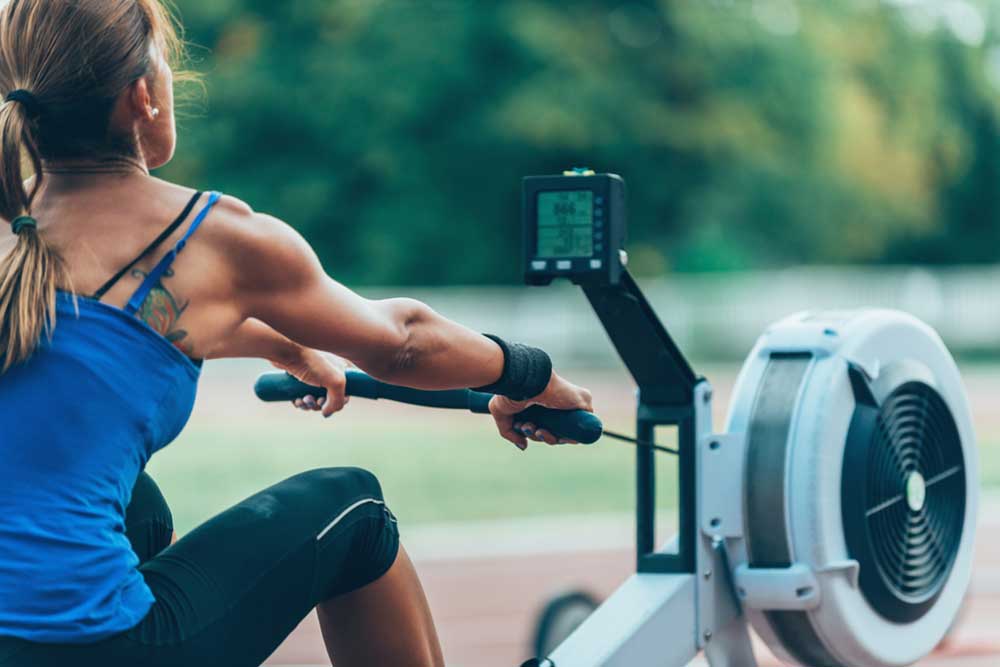Is liposuction, a liposculpture body contouring treatment, the ultimate solution for weight loss, or can diet and exercise do the trick with fat removal procedures and cellulite reduction? This debate has many people scratching their heads. Liposuction, a weight loss treatment in the weight loss surgery industry, offers quick results in the area, but it comes with risks and costs. On the flip side, diet and exercise are natural methods that promote long-term health, unlike liposuction options that offer different liposuction results. They might take longer to show results, but they build sustainable habits. Understanding the differences between these two options is crucial for making informed choices about your body. This post dives into the pros and cons of liposuction versus diet and exercise. Get ready to discover which approach fits your lifestyle and goals best.
Key Takeaways
-
Liposuction is a surgical option for fat removal, but it’s not a substitute for a healthy diet and exercise. Consider combining both for the best results.
-
Understand the different types of fat: visceral fat is harmful and linked to health issues, while subcutaneous fat is less dangerous but can still affect your appearance.
-
Diet and exercise are effective long-term strategies for weight management and overall health. Focus on creating sustainable lifestyle changes rather than quick fixes.
-
Liposuction can be effective for targeted fat loss, but it doesn’t address underlying health problems related to obesity. Always consult a healthcare provider before deciding.
-
Evaluate your body contouring goals carefully. If you have stubborn areas of fat that won’t budge with diet and exercise, liposuction might be worth considering.
-
Remember that health implications are significant; losing fat through diet and exercise can improve overall well-being, while liposuction should be seen as a cosmetic procedure.
Liposuction vs Diet and Exercise
Liposuction Overview
Liposuction is often misunderstood. Many think it is a weight loss method. However, it is primarily a body contouring procedure. It removes fat from specific areas of the body. This includes the abdomen, thighs, and arms. The goal is to enhance body shape rather than reduce overall weight.
Liposuction does not address the root causes of obesity. It is not a substitute for diet or exercise. A person can still gain weight after the procedure if they do not maintain a healthy lifestyle.
Traditional Weight Loss Methods
Diet and exercise are critical for sustainable weight loss. They help improve overall health and fitness. Following a balanced diet supports weight management. Regular physical activity burns calories and builds muscle.
Traditional weight loss methods require commitment and time. They focus on creating a calorie deficit. This means consuming fewer calories than the body uses. Effective strategies include:
-
Eating whole foods.
-
Reducing sugar intake.
-
Increasing physical activity.
These methods promote long-term results and better health.
Targeting Fat Deposits
Liposuction targets specific fat deposits that resist traditional weight loss methods. Some people struggle with stubborn fat despite diet and exercise efforts. Genetics often play a role in where fat accumulates.
For example, some individuals may have excess fat in their thighs or abdomen that doesn’t respond well to a healthy lifestyle alone. Liposuction can effectively remove this localized fat, leading to improved body contours.
Nevertheless, liposuction is not a quick fix for everyone. Candidates should be at or near their ideal weight before considering this option.
Recovery and Maintenance
Recovery from liposuction varies by individual. Most people take about one to two weeks to return to normal activities. Following the procedure, maintaining a healthy lifestyle is crucial for lasting results.
Combining diet and exercise with liposuction can lead to better outcomes. Individuals who adopt healthier habits after surgery tend to enjoy improved body shapes over time.
Understanding Fat Types
Visceral Fat
Visceral fat is the type of fat that surrounds your internal organs. This includes the liver, pancreas, and intestines. It is often referred to as “active” fat because it can produce hormones and other substances that affect your health. High levels of visceral fat are linked to serious health risks.
Research shows that excess visceral fat increases the risk of conditions like heart disease, diabetes, and certain cancers. For example, a study published in the journal Obesity found that people with high visceral fat had a greater chance of developing type 2 diabetes. This highlights the importance of managing this type of fat for overall health.
Subcutaneous Fat
Subcutaneous fat lies just beneath the skin. It is the fat you can pinch on your body. While it may not be as dangerous as visceral fat, it still plays a role in health. Losing subcutaneous fat can be more challenging through diet and exercise alone.
Many individuals struggle to lose this type of fat. Even with regular workouts and a balanced diet, results may take time. A study from the American Journal of Clinical Nutrition indicates that people often find it easier to shed visceral fat compared to subcutaneous fat. This difficulty can lead some to consider options like liposuction.
Health Implications
Understanding these two types of fat can help in making informed decisions about weight management. Visceral fat poses more immediate health risks than subcutaneous fat. Thus, targeting visceral fat should be a priority for those looking to improve their health.
For example, a person with a larger waist circumference might have more visceral fat. They could benefit from lifestyle changes aimed at reducing this risk factor. These changes include increasing physical activity and improving dietary choices.
Conversely, someone with stubborn subcutaneous fat may feel frustrated despite their efforts. They might engage in regular exercise and eat healthy meals but see little change in their appearance. This situation can lead them to explore surgical options like liposuction, which directly targets unwanted fat deposits.
Visceral Fat
Definition
Visceral fat is a type of fat that stores around internal organs. It is different from subcutaneous fat, which lies just beneath the skin. High levels of visceral fat can lead to serious health issues.
Burning Visceral Fat
A balanced diet and regular exercise are effective methods for burning visceral fat. Eating whole foods, such as fruits, vegetables, and lean proteins helps reduce fat deposits. Cutting back on sugar and processed foods also aids in weight loss.
Exercise plays a crucial role in this process. Aerobic activities like running, swimming, and cycling can significantly decrease visceral fat levels. Strength training builds muscle, which boosts metabolism. Combining these methods leads to better results.
Health Risks
High levels of visceral fat increase the risk of various diseases. Studies show a strong link between visceral fat and diabetes. This type of fat affects how the body processes insulin. It can lead to insulin resistance, a precursor to diabetes.
Heart disease is another major concern associated with excess visceral fat. It contributes to high blood pressure and cholesterol levels. These factors can cause heart attacks or strokes over time. Reducing visceral fat through diet and exercise lowers these risks significantly.
Liposuction Limitations
Liposuction targets subcutaneous fat, not visceral fat. This cosmetic procedure removes fat deposits under the skin but does not improve internal fat levels. Therefore, individuals seeking to reduce health risks should focus on lifestyle changes instead.
Many people mistakenly believe liposuction will solve their weight problems. However, without addressing visceral fat through diet and exercise, health issues may persist. Relying solely on surgical methods can lead to disappointment.
Subcutaneous Fat
Common Areas
Subcutaneous fat often collects in specific areas of the body. Common spots include love handles, thighs, and the abdomen. These areas can become problematic for many people. They may find it hard to lose this unwanted fat through diet and exercise alone.
Fat accumulation in these regions can lead to noticeable bulges. This can affect a person’s confidence and body image. It’s frustrating to see little change despite efforts to reduce fat through workouts or calorie restriction.
Resistance to Diet and Exercise
Subcutaneous fat is known for being stubborn. Many individuals struggle with this type of excess fat. Even with a healthy diet and regular exercise, results may not show in certain areas.
Research shows that subcutaneous fat has a different metabolic profile compared to visceral fat. This means it does not respond as well to lifestyle changes. The body tends to hold onto this fat more tightly, making it difficult to achieve desired results.
Liposuction Effectiveness
Liposuction offers a solution for those looking to remove targeted fat effectively. This surgical procedure focuses on specific areas of the body. Surgeons use suction techniques to remove subcutaneous fat from places like the abdomen, thighs, and arms.
The process allows for fat sculpting in ways that diet and exercise cannot always achieve. Patients often see immediate results after the procedure. Liposuction can significantly improve body contours and enhance skin elasticity in treated areas.
However, liposuction is not a substitute for a healthy lifestyle. Maintaining good skin elasticity is crucial after the procedure. Proper care helps ensure that skin remains tight and smooth post-surgery.
Health Considerations
Excess subcutaneous fat can impact overall health. While it is less dangerous than visceral fat, it still poses risks. High levels of subcutaneous fat can lead to conditions like diabetes or heart disease over time.
Individuals should consider their options carefully when dealing with unwanted fat. Consulting with healthcare professionals can help determine the best course of action. They can provide guidance on whether lifestyle changes or surgical options are appropriate.
In summary, understanding subcutaneous fat is key to addressing body image issues effectively. Recognizing common problem areas helps target efforts better. While diet and exercise play vital roles in health, they may not always eliminate stubborn fat. Liposuction offers an effective alternative for those seeking targeted fat removal.
Effectiveness of Liposuction
Targeting Fat
Liposuction can precisely target and remove stubborn fat deposits. Many people struggle with areas that resist diet and exercise. These areas often include the abdomen, thighs, and arms. Traditional liposuction surgery allows surgeons to sculpt the body effectively. Surgeons use various liposuction techniques to achieve desired results.
High definition liposuction is one such technique. It focuses on creating a defined physique by removing fat in specific areas. This method enhances muscle visibility. Vaser abs liposuction also targets the abdominal area for better definition. Both techniques show how advanced liposuction technology can refine body contours.
Immediate Results
Liposuction results are immediate. Patients often notice changes right after the procedure. The removal of fat leads to a more contoured appearance. This immediate transformation can boost self-esteem and confidence.
Many liposuction patients report satisfaction with their new body shape. They appreciate how quickly they see results compared to traditional weight loss methods. While diet and exercise take time to show changes, liposuction provides instant gratification.
Not for Weight Loss
Liposuction is not a solution for overall weight loss. It serves as a method for localized fat reduction. Ideal candidates are those close to their target weight but have stubborn fat pockets.
The procedure does not replace healthy habits like diet and exercise. Instead, it complements them by enhancing body shape. A balanced lifestyle remains essential for long-term health.
Recovery Process
Liposuction recovery varies among patients. Most experience swelling and bruising after the procedure. These effects usually subside within weeks. Patients can return to normal activities in a short time, but full recovery may take longer.
Following post-operative care instructions helps ensure optimal healing. Many doctors recommend wearing compression garments to support recovery. Proper care aids in achieving the best liposculpture results.
Benefits of Diet and Exercise
Overall Health
Diet and exercise play a crucial role in improving overall health. They help maintain a healthy weight and reduce the risk of chronic diseases. Regular physical activity strengthens the heart, lungs, and muscles. It also boosts mental health by reducing anxiety and depression.
A balanced diet provides essential nutrients. These nutrients support bodily functions and promote energy levels. Patients who focus on both diet and exercise often report feeling more energetic. They also experience better moods and enhanced cognitive function.
Reducing Visceral Fat
Visceral fat is dangerous. It surrounds vital organs and increases the risk of serious health issues. Diet and exercise are effective solutions for reducing this type of fat. Studies show that a combination of aerobic exercises and strength training can significantly lower visceral fat levels.
Healthy eating habits complement these efforts. Consuming whole foods like fruits, vegetables, lean proteins, and whole grains helps in fighting visceral fat. Limiting processed foods can also make a big difference. Patients who adopt these changes see improvements in their body composition.
Sustainable Weight Loss
Weight loss efforts can be challenging. Many people seek quick fixes like liposuction. However, diet and exercise provide a sustainable option for weight management. Consistency is key to achieving lasting results.
Setting realistic goals is important. Gradual weight loss is healthier than rapid changes. Aiming for 1-2 pounds per week is a good target. This approach allows the body to adjust without causing stress or fatigue.
Incorporating regular workouts into daily routines aids in burning calories. Activities like walking, jogging, or cycling can fit easily into busy schedules. Combining this with mindful eating leads to effective weight loss strategies.
Physical Fitness
Improving physical fitness enhances quality of life. Regular exercise increases stamina and flexibility, making daily tasks easier. Patients often find that they can engage more fully in activities they enjoy.
Moreover, exercising with friends or family can boost motivation. Group workouts create accountability and make fitness fun. This social aspect encourages individuals to stick with their routines.
Dietary choices also affect physical performance. Proper nutrition fuels workouts and aids recovery after exercise. Eating balanced meals before and after exercising improves endurance and reduces soreness.
Health Implications of Fat Loss
Visceral Fat Reduction
Reducing visceral fat has significant health benefits. This type of fat surrounds vital organs and can lead to serious health issues. Studies show that higher levels of visceral fat increase the risk of diabetes and heart disease. Lowering this fat can improve overall health and longevity.
Losing visceral fat also enhances metabolic function. A healthier metabolism helps the body use energy more efficiently. This can lead to better blood sugar control and lower cholesterol levels.
Subcutaneous Fat Loss
Subcutaneous fat is the layer just beneath the skin. Losing this type of fat can improve physical appearance. Many people feel more confident when they see changes in their body shape. This boost in self-esteem often leads to a more active lifestyle.
A positive body image can motivate individuals to stick with their weight loss goals. People may feel encouraged to engage in social activities or exercise regularly. These actions further support their journey toward a healthier body.
Long-Term Weight Management
Maintaining a healthy weight is crucial for long-term health. Diet and exercise play key roles in achieving this goal. Traditional weight loss methods, like balanced eating and regular workouts, create sustainable habits.
Eating nutrient-rich foods fuels the body effectively. Regular exercise strengthens muscles and improves cardiovascular health. Together, these practices help individuals avoid significant weight difficulties later on.
Weight loss alternatives, like liposuction, may seem appealing for quick results. However, they do not address the underlying habits that contribute to unhealthy weight gain. Focusing on lifestyle changes offers lasting benefits.
Emotional Well-Being
The journey of fat reduction can also impact mental health. Achieving a weight loss goal often leads to increased motivation and vitality. Individuals may experience less anxiety and improved mood as they progress.
Support from friends and family can enhance this emotional journey. Celebrating small victories encourages continued effort toward health goals.

When to Choose Liposuction
Specific Fat Deposits
Individuals should consider liposuction when specific fat deposits do not respond to diet and exercise. Sometimes, despite a healthy lifestyle, certain areas remain resistant to fat loss. These stubborn spots can be frustrating.
For example, some people may have excess fat on their abdomen or thighs. They might follow strict diets and exercise regularly but see little change in these areas. This is where liposuction can help. It targets localized fat deposits effectively.
Good Candidates
Good candidates for liposuction often have localized fat deposits and good skin elasticity. Those with firm skin tend to recover better after the procedure. Skin elasticity helps the body adjust to its new shape after fat removal.
Candidates typically should be near their ideal weight. A BMI (Body Mass Index) of 30 or lower is often recommended. Health professionals assess individual cases carefully. They look at overall health and goals before recommending surgery.
Refining Body Shape
Liposuction is best for individuals who want to refine their body shape, not for those seeking significant weight loss. Many view it as a way to enhance their figure rather than a solution for obesity. It works well for sculpting areas like the waist, hips, and legs.
People often feel more confident after the procedure. For instance, someone unhappy with their profile may find that liposuction improves their self-image significantly. The results can lead to increased motivation for maintaining a healthy lifestyle.
Consultation Importance
Consultation with a qualified surgeon is crucial before deciding on liposuction. Surgeons evaluate medical history and discuss expectations during this meeting. They provide insights into what candidates can realistically expect from the procedure.
Surgeons also explain the risks involved in common surgeries like liposuction. Knowing these risks helps individuals make informed decisions about their bodies.
Emotional Considerations
Many individuals face emotional challenges related to body image. Liposuction can address these feelings by improving physical appearance. However, it’s important to understand that surgery does not solve underlying issues related to self-esteem.
Patients should approach the decision thoughtfully. Setting realistic goals is essential for satisfaction post-surgery. Support from friends and family can also play a significant role in recovery.
Criteria for Body Contouring
Excess Fat Deposits
Excess fat deposits play a significant role in body contouring. These are areas where fat accumulates and can be resistant to diet and exercise. Common spots include the abdomen, thighs, and arms. Liposuction targets these stubborn fat pockets effectively.
Individuals should consider their overall body composition when assessing excess fat. A thorough consultation with a qualified professional helps determine if liposuction is suitable. They can evaluate the specific body contours and suggest the best approach.
Body Proportions
Body proportions are crucial in evaluating candidates for body contouring treatments. Ideal candidates often have a balanced figure but struggle with specific areas of fat. Maintaining good proportions enhances the results of procedures like liposuction.
An assessment of one’s natural shape is essential. It ensures that the final results align with personal aesthetic goals. Professionals often use visual aids to help clients understand potential outcomes based on their current figures.
Skin Elasticity
Skin elasticity significantly influences the success of body contouring procedures. Elastic skin adapts better to changes after fat removal. Age, genetics, and lifestyle impact skin elasticity.
Candidates with good skin elasticity tend to experience smoother results post-procedure. Those with loose or sagging skin may require additional treatments to achieve desired contours. A discussion about skin quality during the consultation is vital for setting realistic expectations.
Desired Weight
Being close to one’s desired weight is important for optimal outcomes in body contouring. Procedures like liposuction are not weight-loss methods; they sculpt the body instead. Candidates should aim to be within 30% of their ideal weight before undergoing treatment.
This ensures that the procedure enhances existing contours rather than compensating for significant weight loss needs. Maintaining a healthy lifestyle post-procedure also helps sustain results.
Physical Health
Physical health is a key factor for those considering body contouring procedures. Healthy individuals generally recover better and experience fewer complications. Conditions like diabetes, heart disease, or obesity can increase risks associated with surgery.
A medical evaluation prior to any procedure assesses overall health status. Surgeons often recommend patients disclose all health conditions during consultations.
Final Remarks
Choosing between liposuction and diet or exercise is a personal journey. Each option has its perks and drawbacks. Liposuction offers quick results, while diet and exercise promote sustainable health. Understanding your body type and health goals is crucial.
Evaluate your choices carefully. If you want immediate change, liposuction might be the way to go. However, embracing a healthy lifestyle through diet and exercise can lead to long-lasting benefits. Consider what aligns with your values and aspirations. Take charge of your health today!
Frequently Asked Questions
What is the main difference between liposuction and diet/exercise?
Liposuction is a surgical procedure that removes fat from specific areas of the body, while diet and exercise focus on overall weight loss and health improvement. Liposuction targets stubborn fat, whereas diet and exercise promote long-term lifestyle changes.
Is liposuction a permanent solution for fat loss?
Liposuction permanently removes fat cells, but it doesn’t prevent new fat from forming. Maintaining a healthy lifestyle with diet and exercise is essential to keep results long-lasting.
Can I achieve the same results with diet and exercise as with liposuction?
While diet and exercise can lead to significant fat loss, they may not effectively target specific areas like liposuction can. Individual results vary based on genetics, metabolism, and commitment.
Who is an ideal candidate for liposuction?
Ideal candidates are generally at or near their target weight, have good skin elasticity, and seek to remove localized fat deposits. Consultation with a qualified surgeon is crucial for personalized assessment.
Are there any risks associated with liposuction?
Yes, like any surgery, liposuction carries risks such as infection, scarring, and anesthesia complications. It’s important to discuss these risks with your surgeon during the consultation.
How quickly can I see results from diet and exercise compared to liposuction?
Diet and exercise results take time; you may see changes within weeks but achieving significant weight loss can take months. Liposuction offers immediate results post-recovery, although swelling may initially obscure them.
What are the long-term benefits of combining diet, exercise, and occasional liposuction?
Combining these methods promotes overall health, enhances body shape, and helps maintain weight loss. Regular physical activity and balanced nutrition support sustainable results after liposuction.





